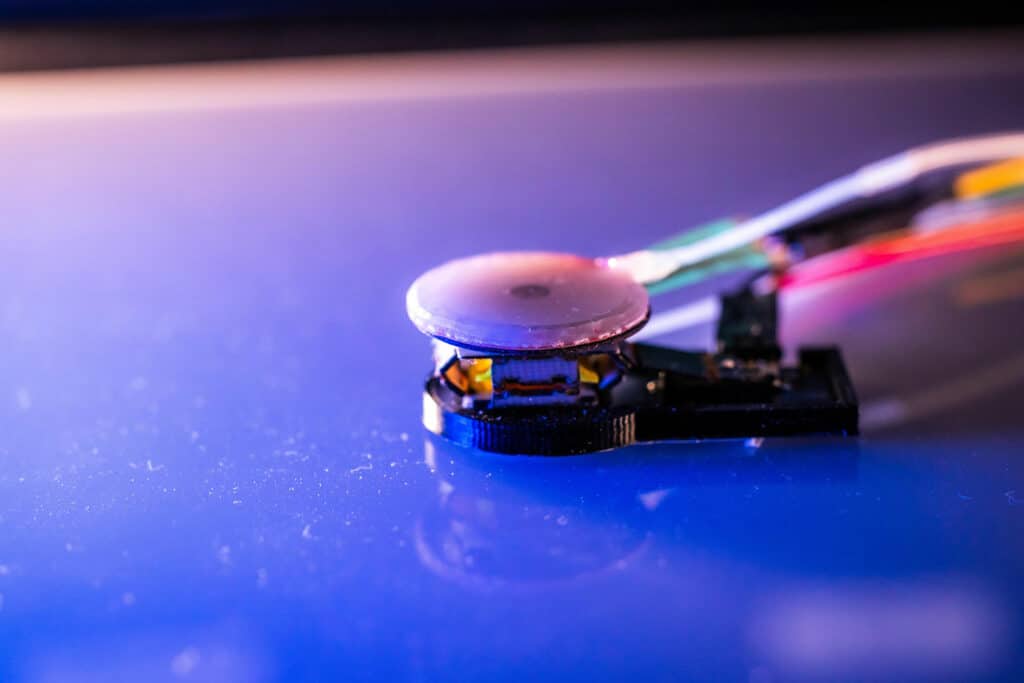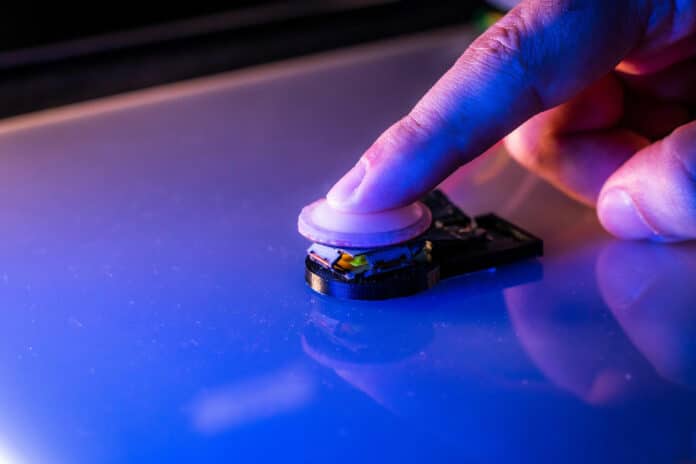The perception of softness is often overlooked, yet it holds significant importance in various actions and interactions. From assessing the maturity of an avocado to carrying out a medical examination or holding the hand of a beloved, softness perception plays a vital role. However, comprehending and replicating softness perception is complex because it involves numerous sensory and cognitive processes.
Robotic researchers have tried to address this challenge with haptic devices, but earlier attempts failed to differentiate between two primary elements of softness perception: cutaneous cues (sensory feedback from the skin of the fingertip) and kinesthetic cues (feedback about the amount of force on the finger joint).
Now, EPFL researchers have developed a haptic device capable of reproducing the softness of various materials, from a marshmallow to a beating heart, overcoming a deceptively complex challenge that has previously eluded roboticists.
“If you press on a marshmallow with your fingertip, it’s easy to tell that it’s soft. But if you place a hard biscuit on top of that marshmallow and press again, you can still tell that the soft marshmallow is underneath, even though your fingertip is touching a hard surface,” explains Mustafa Mete, a Ph.D. student in the Reconfigurable Robotics Lab in EPFL’s School of Engineering. “We wanted to see if we could create a robotic platform that can do the same.”

With the innovative Softness Rendering Interface (SORI), the RRL, led by Jamie Paik, has achieved just that. By separating cutaneous and kinesthetic cues, SORI is able to replicate the softness of various materials with remarkable accuracy. This breakthrough addresses a gap in the robotics industry and opens up numerous applications where the sensation of softness is paramount, such as in underwater exploration or surgical procedures assisted by robots.
Neuroscientific and psychological studies show that cutaneous cues are largely based on how much skin is in contact with a surface. The perception of softness is related to the amount of deformation that the object causes on the skin. However, as human fingertips differ in size and firmness, it’s possible that different fingers may make greater contact with a given surface than others.
“We realized that the softness I feel may not be the same as the softness you feel because of our different finger shapes. So, for our study, we first had to develop parameters for the geometries of a fingertip and its contact surface in order to estimate the softness cues for that fingertip,” Mete explains.
Then, the researchers extracted the softness parameters of various materials and then mapped those parameters onto the SORI device. SORI, which is built on the origami robot research by RRL, features motor-driven origami joints that can be adjusted to become more supple or stiffer. The device has a dimpled silicone membrane placed on top of the joints, which can be inflated with the help of air to different degrees to cover a fingertip placed at its center.
With this novel decoupling of kinesthetic and cutaneous functionality, SORI was able to recreate the softness of various materials like beef, salmon, and marshmallow. It also mimicked materials with both soft and firm attributes, like a biscuit on top of a marshmallow or a leather-bound book. In virtual experiments, SORI even reproduced the sensation of a beating heart to demonstrate its efficacy at rendering soft materials in motion.
This technology could be used to train medical students to detect cancerous tumors or provide crucial sensory feedback to surgeons using robots to perform operations. The idea of using it for space exploration or deep ocean research is really exciting, as it could allow scientists to feel the softness of an object from a remote location.
The potential for robot-assisted agriculture is also intriguing. It could help with the delicate task of harvesting tender fruits and vegetables without damaging them.
“This is not intended to act as a softness sensor for robots, but to transfer the feeling of ‘touch’ digitally, just like sending photos or music,” Mete summarizes.
